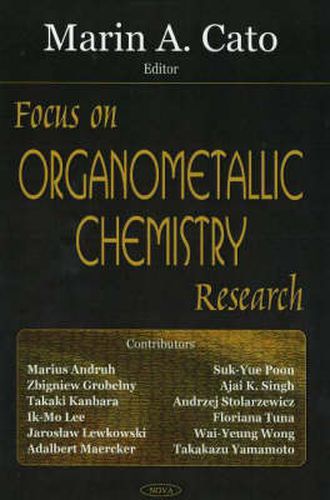Readings Newsletter
Become a Readings Member to make your shopping experience even easier.
Sign in or sign up for free!
You’re not far away from qualifying for FREE standard shipping within Australia
You’ve qualified for FREE standard shipping within Australia
The cart is loading…






Organometallic chemistry is based on the reactions and use of a class of compounds (R-M) that contain a covalent bond between carbon and metal. They are prepared either by direct reaction of the metal with an organic compound or by replacement of a metal from another organometallic substance. Research in organometallic chemistry is also conducted in the areas of cluster synthesis, main-group derivatives in unusual oxidation states, organometallic polymers, unstable organometallic compounds and intermediates in matrices, structure determination of organometallic compounds in the solid state [X-ray diffraction] and gaseous states [electron diffraction], and mechanisms of reactions of transient silylenes and related species. In addition to the traditional metals and semimetals, elements such as selenium, lithium and magnesium are considered to form organometallic compounds, e.g. organomagnesium compounds MeMgI, iodo(methyl)magnesium and diethylmagnesium which are Grignard reagents an organo-lithium compound BuLi butyllithium; Organometallic compounds often find practical use as catalysts, the processing of petroleum products and the production of organic polymers.
$9.00 standard shipping within Australia
FREE standard shipping within Australia for orders over $100.00
Express & International shipping calculated at checkout
Organometallic chemistry is based on the reactions and use of a class of compounds (R-M) that contain a covalent bond between carbon and metal. They are prepared either by direct reaction of the metal with an organic compound or by replacement of a metal from another organometallic substance. Research in organometallic chemistry is also conducted in the areas of cluster synthesis, main-group derivatives in unusual oxidation states, organometallic polymers, unstable organometallic compounds and intermediates in matrices, structure determination of organometallic compounds in the solid state [X-ray diffraction] and gaseous states [electron diffraction], and mechanisms of reactions of transient silylenes and related species. In addition to the traditional metals and semimetals, elements such as selenium, lithium and magnesium are considered to form organometallic compounds, e.g. organomagnesium compounds MeMgI, iodo(methyl)magnesium and diethylmagnesium which are Grignard reagents an organo-lithium compound BuLi butyllithium; Organometallic compounds often find practical use as catalysts, the processing of petroleum products and the production of organic polymers.